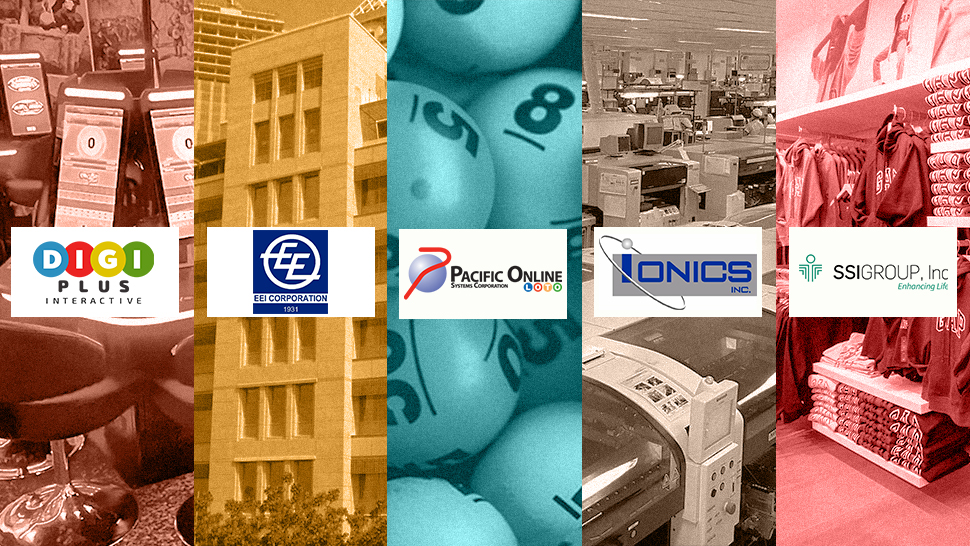Financial Adviser: 5 Best Performing Stocks in the PSE in 2023 and How to Profit from Them

The Philippine stock market has faced a series of challenges this year, which present difficulties for investors and market participants alike.
Various factors, such as global economic uncertainties, geopolitical tensions, and the impact of the COVID-19 pandemic, have contributed to this turbulent environment.
As a result, investors have had to navigate through unpredictable market conditions, making it a challenging year for the Philippine stock market.
However, there is some optimism among investors as inflation and interest rates have shown a decline in recent times. This positive development has raised hopes for a potential market rally, which could potentially lead to a positive end to the year.
The recent decline in inflation and interest rates brings positive implications for both the economy and the stock market. Lower inflation rates signify increased purchasing power for consumers, potentially leading to a boost in consumer spending and corporate earnings.
On the other hand, lower interest rates make borrowing more affordable for businesses, encouraging expansion and investment. These developments can have a positive impact on stock prices.
The PSE Index has so far managed to reduce its year-to-date loss from 16 percent last month, to a more modest -1.3 percent. This indicates a positive trend in the market, with the index showing signs of recovery and narrowing its losses.
It is worth noting that while the stock market has been bearish this year, there has been a notable upward trend in the performance of small and mid-cap stocks. These stocks have shown resilience and have risen despite the overall market downturn.
If you are willing to take on higher risks and are seeking higher returns, you may consider investing in non-index stocks. These stocks, often categorized as riskier due to their smaller market capitalization and potentially higher volatility, can offer greater growth potential.
What stocks were the biggest gainers this year? How risky are these stocks? Do they have emerging fundamental value that may be worth looking at next year? Note that the best-performing stocks this year do not necessarily guarantee success in the upcoming year.
In fact, three of the top five biggest winners last year ended lower this year. These include AbaCore Capital (PSE: ABA), which gained +126 percent last year but experienced a -58.2 percent loss this year; Now Corporation (PSE: NOW), with a +73.6 percent gain last year and a -48.7 percent performance this year; and Semirara Mining (PSE: SCC), which saw a +61.5 percent gain last year but ended with a -17.4 percent loss this year.
When considering these stocks, it's important to remember that past performance is not indicative of future performance, and thorough analysis is necessary to evaluate the investment potential of any stock.
Here are the top five biggest stock market winners in 2023:
ALSO READ
Financial Adviser: 5 Worst-Performing Stocks in the PSE in 2023 and How to Profit from Them
Financial Adviser: 5 Dividend-Paying Preferred Stocks Every Saver Can Buy to Earn Up to 10.58% p.a.
1| DigiPlus Interactive Corporation
Price: P6.88
Year-to-date gain: +185.5 percent
DigiPlus Interactive Corporation (PSE: PLUS) is the leading retail gaming company in the Philippines that offers a wide range of multi-gaming platforms and products.
PLUS operates professional bingo games with 35 percent market share and has expanded its operations to include online gaming, casino ventures, and property ventures.
PLUS, then known as Leisure and Resorts World (PSE: LR), faced significant challenges during the COVID-19 pandemic, which saw its total revenues plummeting by 66 percent, dropping to P3.6 billion. This downward trend persisted into 2021, with revenues declining further to P2.8 billion.
The decline in total revenues caused PLUS to report a net loss of P1.3 billion in 2020, a significant drop from the net income of P95.6 million in the previous year. Despite a further fall in total revenues in 2021, net losses were reduced to P828 million, due to strategic cost-cutting measures and lower financing charges.
In 2022, PLUS took proactive steps to adapt to the changing landscape brought about by the pandemic. The company recognized the need to diversify its revenue streams and explore new business opportunities to mitigate the impact of future disruptions.
As part of this strategy, PLUS obtained a new license from the Philippine Amusement and Gaming Corporation (PAGCOR) to launch a new business product called “BingoPlus.”
The introduction of BingoPlus, an innovative technology platform for traditional bingo, enabled PLUS to turn around in 2022, with its total revenues growing by more than three times to P8.9 billion from P2.8 billion in 2021. This strong recovery resulted in a net profit of P600 million
The recovery in PLUS's earnings last year enabled its stock price to appreciate by +61.7 percent, making it one of the top five best performing stocks in the PSE.
This year, PLUS’ total revenues continued to surge, growing almost threefold to P15.9 billion in the first nine months compared to P5.5 billion in the same period last year.
This remarkable growth led to record earnings of P2.1 billion, marking a significant increase from the mere P188 million reported last year and establishing a historic high for the company.
If we add PLUS’s nine-month income to its net income for the 4th quarter of 2021, we arrive at a 12-month trailing income of P2.51 billion. Using this figure to divide PLUS’ current market cap of P30.3 billion, we calculate a Price-to-Earnings (PE) ratio of 12.0 times.
At 12.0 times PE, the stock appears to be fairly valued, given that it's almost in line with the market average. However, considering the strong growth prospects and earnings momentum of PLUS, the stock should be priced in alignment with its expected growth rate.
PLUS’ net income has increased by a compounded growth rate of 22 percent per year for the past ten years, increasing from P323 million in 2013 to P2.51 billion this year.
Using a PE-to-Growth (PEG) ratio of 22.0 times, we can estimate PLUS’ target share price at P12.60 per share, indicating a potential gain of 83 percent from its current share price
2| EEI Corporation
Price: P5.85
Year-to-date gain: +108.9 percent
EEI Corporation (PSE: EEI) is one of the premier construction companies in the Philippines, being the preferred provider of construction services to global engineering, procurement, and construction companies.
With a strong reputation and a track record of excellence, EEI has solidified its position as a leader in the industry. It enjoys quadruple-A rating as a General Engineering Contractor, the highest accreditation bestowed upon contractors by the Philippine Contractors Accreditation Board (PCAB).
Prior to the pandemic, EEI’s total revenues grew at an average annual rate of 6.0 percent from P18.9 billion in 2015 to P23.6 billion in 2019. This consistent growth in EEI’s revenues allowed the company to increase its net income by 55 percent per year, rising from P202 million in 2015 to P1.15 billion.
During the 2020 pandemic, EEI’s total revenues sharply declined by 41 percent to P13.8 billion, leading to a net loss of P2.0 billion. Since then, the company has faced challenges in recovering its revenues to pre-pandemic levels.
Last year, EEI’s total revenues dropped by 9.2 percent to P14.6 billion from P16.1 billion in 2021, resulting in a 57 percent decline in net income to P209 million from P489 million in the previous year.
This year, EEI’s total revenues for the first nine months grew by 17.2 percent to P12.2 billion from P10.4 billion in 2022. However, higher financing charges and losses from its investments and joint ventures resulted in a net loss of P292 million, compared to a net income of P144 million in the previous year.
But despite EEI's disappointing financial performance, its stock price remains high, apparently due to the entry of new shareholders into the company.
Earlier this year, House of Investment (PSE: HI), the controlling shareholder of EEI, sold its 20 percent stake to the Romualdez family-led firm RYM Business Management Corp. for P1.25 billion at P6.03 each.
This was followed by another sale, representing about 14.34 percent of EEI, to Industry Holdings and Development Corp (IHDC), headed by Francis Chua, for P1.7 billion or roughly P7.23 per share. The sale of EEI shares will leave HI with only 20.9 percent.
Given the price paid by the new investors in EEI, market participants are optimistic that the company will turn around next year. At the current market cap of EEI at P6.1 billion and the average pre-pandemic PE of 4.51, we can estimate EEI’s net income to recover to P1.35 billion in 2024.
The optimism displayed by market participants regarding EEI Corporation's future turnaround is reflected in the estimated net income recovery for the company in 2024. However, it is essential to consider various factors that might delay EEI’s recovery and this may cause the stock to fall.
3| Pacific Online Systems Corp
Price: P3.33
Year-to-date gain: +101.8 percent
Pacific Online Systems Corp (PSE: LOTO) is a company that specializes in the development and management of online computer systems, terminals, and software. They also provide operating and management systems specifically designed for the lottery industry in the country.
LOTO plays a crucial role in the distribution of lottery products within the Philippines. They work in partnership with the Philippine Charity Sweepstakes Office (PCSO), which is a government agency responsible for running various lottery games and charitable initiatives.
As a trusted partner of the PCSO, LOTO brings both technical expertise and market knowledge to the table. They ensure that lottery products are efficiently distributed across the country, making them easily accessible to the public.
LOTO’s total revenues have been declining since 2017, dropping from P2.3 billion to P298.5 million in 2020. Its net income has also seen a decline, starting from P490 million in 2017 to a net loss of P378 million.
In 2021, LOTO’s total revenues began to show some improvement, reaching P426 million, a rise of 42.9 percent from P298 million in 2020. This improvement helped reduce its net loss to P140 million.
Last year, LOTO’s total revenues continued to recover, growing by 21.8 percent to P519 million, marking a positive turn after three years of consecutive losses.
This year, LOTO sustained its recovery, with total revenues for the first nine months improving by 40.3 percent, reaching P502 million from P358 million in the same period last year. The increase in revenues enabled LOTO to almost double its net income to P228 million from P127 million the previous year
At a 12-month training income of P290 million, LOTO’s PE ratio stands at 10.5 times, which represents almost twice its average PE ratio in 2016 at 6.32 times when its net income was at P300 million level.
LOTO will need to justify its share price with higher earnings next year. To keep the current share price aligned at its average 6.32 times PE ratio, the company needs to generate a net income of P481 million in 2024.
4| Ionics, Inc
Price: P1.04
Year-to-date gain: +85.7 percent
Ionics, Inc (PSE: ION) is a well-established player in the field of Electronics Manufacturing Services (EMS) with a rich history spanning over four decades.
As the oldest and most experienced electronics provider in the country, Ionics has built a strong reputation for delivering high-quality services to a diverse range of clients, including collaborating with world-class Original Equipment Manufacturers (OEMs) from various industries.
ION’s revenue is primarily contributed by its export sales with 84.4 percent coming from Asia, 5.0 percent from Europe and 10.6 percent from North America.
ION's total revenues have exhibited consistent growth since the 2020 pandemic. In 2021, ION’s total revenues increased by 16.3 percent, reaching $62.5 million from $53.7 million. This surge translated into a more than fivefold increase in net income, rising from $462,000 to $2.7 million.
Last year, ION’s total revenues continued to grow with a 25.4 percent increase, reaching $78.3 million. This robust performance translated into nearly a hundred percent surge in net income, rising to $4.5 million.
This year, ION sustained its growth momentum with its total revenues for the first nine months growing by 41 percent to $75.3 million from $53.1 million in 2022. This resulted to a 29 percent increase in net income to $4.2 million from $3.2 million in the same period last year.
If we consider ION's net income for the past 12 months, the trailing figure stands at $5.4 million. Converting this to pesos at the current exchange rate yields an estimated net income of P305 million.
Calculating ION's PE ratio by dividing its market cap of P887 million by the trailing income of P305 million, we derive a PE ratio of 2.9 times. This is significantly lower than the three-year pre-pandemic average PE of 7.67 times.
If we price ION at its pre-pandemic PE average of 7.67 times assuming the company maintains its earnings momentum in 2024, the stock should be able to achieve its target price of P2.80 per share, which offers a potential 164 percent return.
5| SSI Group, Inc
Price: P2.53
Year-to-date gain: +62.2 percent
SSI Group, Inc. (PSE: SSI) is the leading specialty retailer in the country, boasting an extensive portfolio of well-established international brands. The company operates through a network of 526 stores, encompassing a total gross selling space of approximately 104,321 square meters.
SSI has the largest and most attractive brand collections, including renowned names such as Hermes, Cartier, Salvatore Ferragamo, Zara, Pull&Bear, Old Navy, Lacoste, Gap, Kate Spade, Michael Kors, Marks & Spencer, MUJI, Samsonite, SaladStop!, and Shake Shack.
Approximately 34.7 percent of SSI’s revenues are derived from luxury and bridge products, while 32.9 percent come from fast fashion. Additionally, 15.3 percent are attributed to casual wear, and 6.8 percent from footwear, accessories, and luggage.
Before the pandemic, SSI had consistent revenue growth, averaging 10.3 percent from P10.1 billion in 2011 to P22.4 billion in 2019. This steady increase in revenue resulted in a 15 percent growth in earnings over the years, rising from P240 million in 2011 to P815 million in 2019.
During the 2020 pandemic, SSI incurred a substantial loss of P903 million as its total revenues plummeted by 45 percent to P12.2 billion. The following year, SSI experienced a brief improvement in total revenues, increasing by 26 percent to P15.5 billion, leading to a net income of P150 million.
Last year, SSI's total revenues returned to pre-pandemic levels, reaching P23.7 billion, a 6.0 percent improvement over its 2019 revenues of P22.3 billion. This surge in revenues resulted in a record earnings for the company at P1.9 billion.
This year, SSI sustained its growth momentum with its total revenues for the first nine months rising by 20.8 percent to P18.9 billion from P15.7 billion in 2022. This increase in revenues translated to 66.2 percent growth in net income to P1.5 billion from P918 million in the same period last year.
Based on a 12-month trailing income of P2.5 billion, SSI’s PE ratio stands at only 3.2 times, significantly lower than its pre-pandemic PE average of 12.0 times.
Assuming SSI’s earnings momentum continues into 2024, the stock should be priced at its pre-pandemic average. If we conservatively value the stock at only 75 percent of its PE average, or 9.0 times, its share price should eventually appreciate to the target price of P7.11 per share.
Henry Ong, RFP, is an entrepreneur, financial planning advocate and business advisor. Email Henry for business advice hong@financialadviser.ph or follow him on Twitter @henryong888


